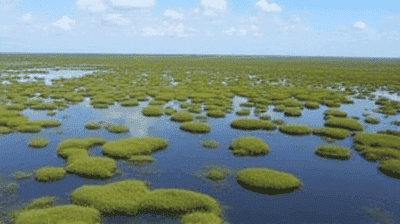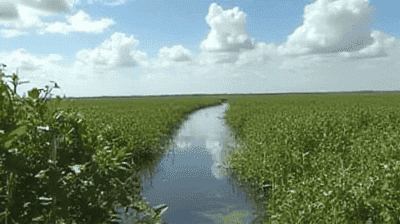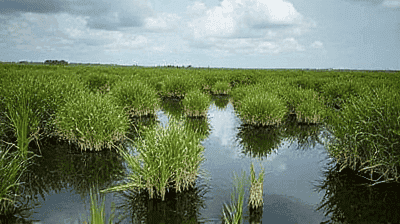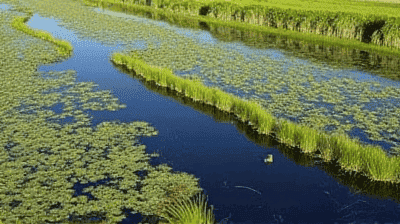
Wetlands are among the most biologically productive ecosystems on the planet, providing vital services that support both local wildlife and human populations. The Eversheds, one of the largest wetland complexes in the United States, exemplifies the natural beauty and ecological importance of these regions. However, this precious habitat faces an increasing threat from urbanization, as expanding cities and infrastructure encroach upon these delicate ecosystems.
Eversheds refer to a vast network of wetlands that stretches across several states in the U.S. These ecosystems can include marshes, swamps, bogs, and fens, each characterized by their unique hydrological and biological features.
Wetlands serve essential functions, including:
Flood Control: Wetlands act as natural sponges, absorbing excess rainwater and reducing the risk of flooding in surrounding areas.
Water Quality Improvement: These ecosystems filter pollutants and sediments from water, providing significant benefits to downstream water bodies.
Habitat for Biodiversity: Wetlands are home to countless species of plants, animals, and microorganisms, many of which are specially adapted to these environments.
Carbon Sequestration: Wetlands store carbon in their biomass and soils, making them crucial for climate change mitigation.
The Eversheds provide habitat for numerous species, including various fish, amphibians, birds, and mammals. This rich biodiversity contributes to the resilience of the ecosystem, allowing it to withstand and recover from environmental changes.
Notable Species:

Urbanization refers to the increasing population of people living in urban areas, leading to the expansion of cities and infrastructure. This trend has significant implications for nearby ecosystems, particularly wetlands.
Population Growth: As populations grow, the demand for housing, transportation, and services rises, leading to the development of previously undeveloped areas.
Economic Development: Urbanization is often driven by the desire for economic growth, which can lead to the conversion of natural habitats into developed land.
Infrastructure Development: New roads, buildings, and utilities often encroach upon wetland areas, leading to degradation.
The impacts of urbanization on Eversheds can be profound and multifaceted:
Habitat Loss: As wetlands are drained or filled to make way for urban development, the habitats that support countless species are destroyed.
Water Quality Degradation: Increased runoff from urban areas often carries pollutants and sediments into wetlands, degrading water quality and harming aquatic life.
Altered Hydrology: Urbanization can change the natural flow of water, disrupting the delicate hydrological balance that wetlands rely on.
Fragmentation: Urban development can isolate wetland patches, making it difficult for wildlife to migrate and access essential resources.
Increased Invasive Species: Disturbances caused by urbanization can allow invasive species to establish themselves, outcompeting native flora and fauna.
Specific examples illustrate the challenges faced by the Eversheds due to urbanization:
Case Study 1: Overdevelopment in Florida: In parts of Florida, aggressive urban expansion has led to the destruction of extensive wetland areas vital for flood protection and wildlife habitat. The impact of this has been felt in increased flooding and loss of biodiversity.
Case Study 2: Louisiana’s Wetland Loss: Wetlands in Louisiana, particularly the coastal marshes, are disappearing at an alarming rate due to a combination of urban development, oil extraction, and rising sea levels. The implications for both local communities and ecosystems are dire.
Given the critical functions that wetlands serve, conservation efforts are essential to ensure their survival in the face of urbanization.
Ecosystem Resilience: Healthy wetlands can withstand and recover from environmental changes, making them vital for ecological stability.
Public Health and Safety: Wetlands play a crucial role in flood management and water filtration, benefitting local communities.
Biodiversity Protection: Conserving wetlands helps protect the species that depend on these habitats, maintaining biodiversity and ecosystem integrity.
Effective conservation strategies must be employed to protect Eversheds from the threats posed by urbanization:
Land Use Planning: Integrating wetland conservation into land-use planning can help prevent encroachment on these areas. This includes establishing buffer zones and protected areas around wetlands.
Restoration Projects: Implementing restoration efforts to rehabilitate degraded wetlands can improve their health and resilience. This involves re-establishing natural hydrology and replanting native vegetation.
Public Awareness Campaigns: Educating the public about the importance of wetlands can foster support for conservation initiatives and encourage responsible land use practices.
Legislation and Policy: Strong legal frameworks are needed to protect wetlands from development. This can include policies that restrict filling and draining of wetlands and promote sustainable land-use practices.
Collaboration among various stakeholders—government agencies, non-profit organizations, local communities, and businesses—is essential for successful conservation efforts.
Public-Private Partnerships: Collaborative projects can leverage resources and expertise from both the public and private sectors to enhance conservation outcomes.
Community Involvement: Engaging local communities in conservation efforts can lead to more effective management practices and a greater sense of ownership over local resources.
Academic and Research Institutions: Collaboration with research institutions can provide valuable scientific knowledge and data needed for effective conservation planning.

Several key pieces of legislation govern wetland protection in the United States:
Clean Water Act: This essential framework regulates discharges into U.S. waters and aims to protect wetlands from pollution and degradation.
Wetlands Act: This legislation specifically addresses the preservation of wetlands and the establishment of protective regulations.
Endangered Species Act: Protecting the habitats of threatened and endangered species can help conserve wetland ecosystems.
Local governments play a crucial role in implementing policies that protect wetlands. They often have the most direct authority over land use and development practices.
Zoning Regulations: Local governments can implement zoning laws that limit development in sensitive wetland areas, preserving them for conservation and ecosystem services.
Watershed Management Plans: Effective watershed management can mitigate the impacts of urbanization on wetlands by protecting water quality and promoting sustainable practices in surrounding areas.
Incentives for Conservation: Local governments can provide incentives for landowners and developers to conserve wetlands, such as tax breaks or grants for restoration projects.
The future of Eversheds and other wetland ecosystems faces numerous challenges in light of ongoing urbanization:
Economic Pressures: As cities grow, the economic incentives for developing land can outweigh the perceived value of preserving wetland ecosystems.
Climate Change: Increasing temperatures and altered precipitation patterns can compound the stress on wetlands already threatened by urbanization.
Political Will: Effective conservation requires strong political commitment, which can vary significantly among local, state, and federal governments.
Despite these challenges, there are numerous opportunities for promoting the survival of wetlands like the Eversheds:
Innovation in Conservation: New technologies and methods, such as remote sensing for monitoring wetland health, can enhance conservation efforts.
Increased Funding: Greater financial investment in wetland conservation from government and private sources can provide the necessary resources for protection and restoration.
Growing Public Awareness: The increasing recognition of the importance of biodiversity and ecosystem services can lead to a stronger public demand for wetland conservation initiatives.

Educating local communities about the importance of wetlands is vital for fostering appreciation and support for conservation efforts.
School Programs: Incorporating wetland education into school curricula can help instill an understanding of these ecosystems in younger generations.
Community Workshops: Hosting workshops and events focused on wetland conservation can encourage community involvement and stimulate local interest in preserving natural habitats.
Volunteering Opportunities: Engaging community members in restoration projects can foster a sense of ownership and responsibility for local wetlands.
Several successful case studies demonstrate the power of community engagement in wetland conservation:
Restoration in the Chesapeake Bay: Local communities in the Chesapeake Bay area have initiated restoration projects that combine educational outreach with hands-on conservation efforts, leading to the recovery of crucial wetland habitats.
Florida Everglades Restoration: A coordinated effort among state and federal agencies, local communities, and conservation organizations has led to the successful restoration of sections of the Everglades, highlighting the importance of collaboration in ensuring the health of vital wetland ecosystems.
The Eversheds and similar wetland ecosystems face unprecedented threats from urbanization, which poses significant challenges to their survival. However, through effective conservation strategies, community engagement, education, and strong policy frameworks, there is hope for these critical habitats.
By recognizing the importance of wetlands in maintaining ecological health, supporting biodiversity, and providing vital services to human populations, we can work together to create a future where the Eversheds not only survive but thrive amidst growing urban challenges.
As stewards of the environment, it is our responsibility to advocate for the preservation of these unique ecosystems, ensuring that they continue to provide essential benefits for generations to come.